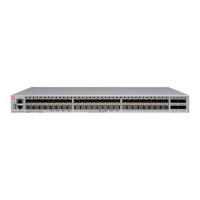Table 78: List of Stacking Terms (continued)
Term Description
Alternate stacking A stacking configuration in which stack members are connected using 10-
Gbps Ethernet data ports that have been configured for stacking. These
ports are located either on the switch itself or on option cards installed on
the rear of the switch.
Stacking link A cable that connects a stacking port of one stackable switch to a
stacking port of another stackable switch, plus the stacking ports
themselves.
Node A switch that runs the ExtremeXOS operating system and is part of a
stack. Synonymous with stackable switch.
Stack A set of stackable switches and their connected stacking links made with
the intentions that: (1) all switches are reachable through their common
connections; (2) a single stackable switch can manage the entire stack;
and (3) configurable entities such as VLANs and link trunk groups can
have members on multiple stackable switches. A stack consists of all
connected nodes regardless of the state of the nodes.
Stack topology A contiguously connected set of nodes in a stack that are currently
communicating with one another. All nodes that appear in the show
stacking command display are present in the stack topology.
Stack path A data path that is formed over the stacking links for the purpose of
determining the set of nodes that are present in the stack topology and
their locations in the stack. Every node is always present in a stack path
whether or not stacking is enabled on the node.
Control path A data path that is formed over the stacking links that is dedicated to
carrying control trac, such as commands to program hardware or
software image data for software upgrade. A node must join the control
path to fully operate in the stack. A node that is disabled for stacking does
not join the control path, but does communicate over the stack path.
Active node A node that has joined the control path. The active node can forward the
control path messages or can process them. It can also forward data
trac. Only an active node can appear as a card inserted into a slot when
the show slot {slot {detail} | detail } command is
executed on the master node of the stack.
Active topology A contiguous set of active nodes in a stack topology plus the set of
stacking links that connect them. When an active topology consists of
more than one node, each node in the active topology is directly and
physically connected to at least one other node in the active topology.
Thus, the active topology is a set of physically contiguous active nodes
within a stack topology.
Candidate node A node that is a potential member of an active topology, or an active node
that is already a member of an active topology. A candidate node may or
may not be an active mode – that is, it may or may not have joined the
control path.
Node role The role that each active node plays in the stack – either master (or
primary), backup, or standby.
SummitStack Terms Building Stacks
190 ExtremeSwitching Hardware Installation Guide

